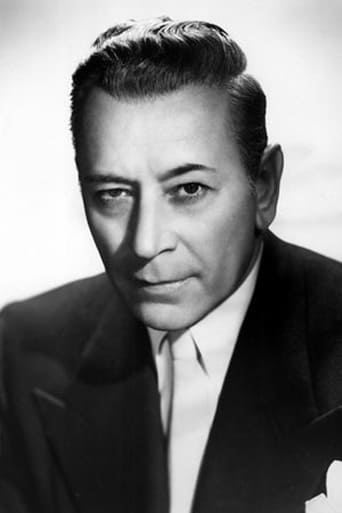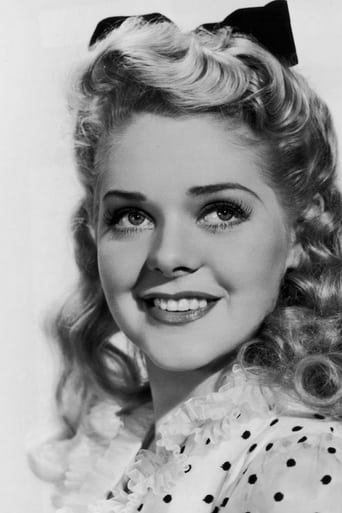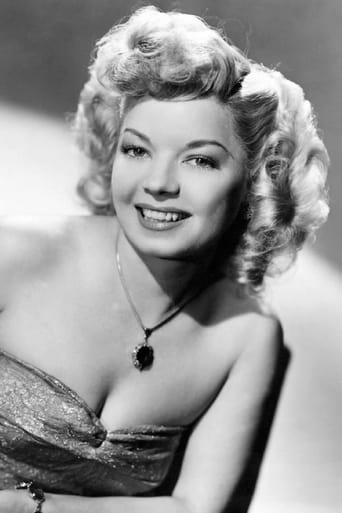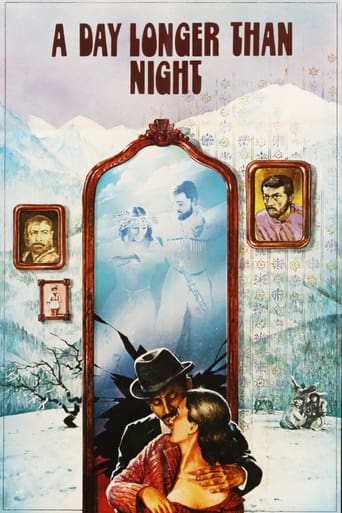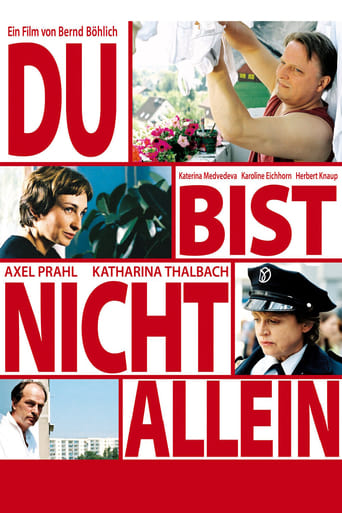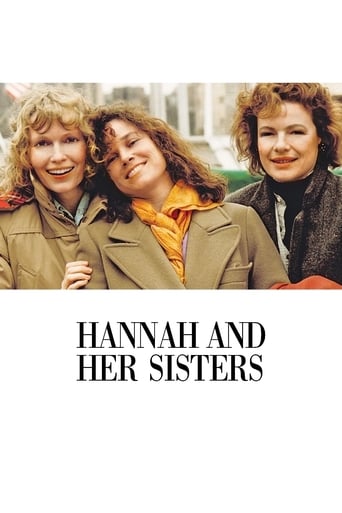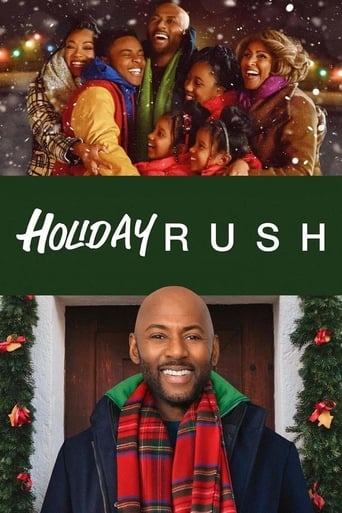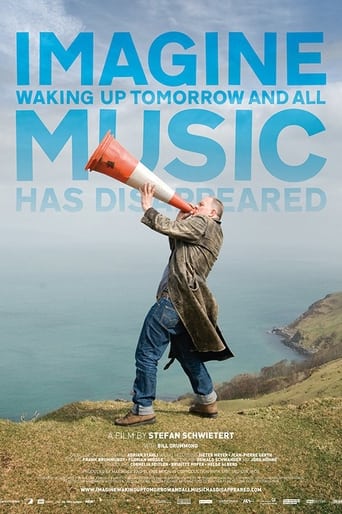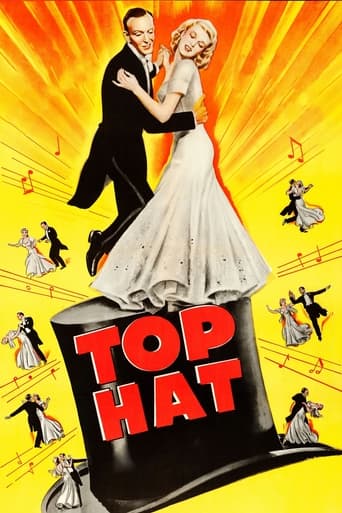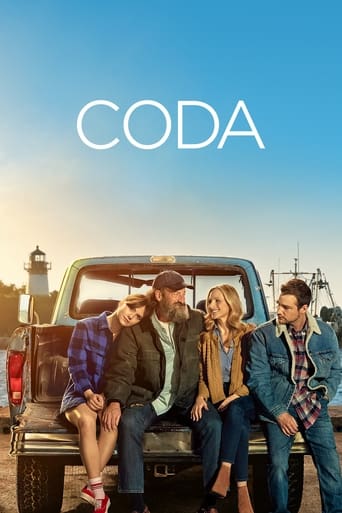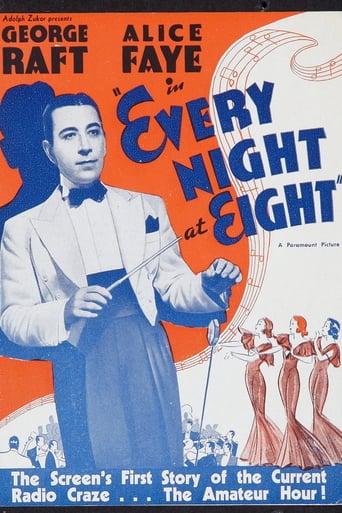
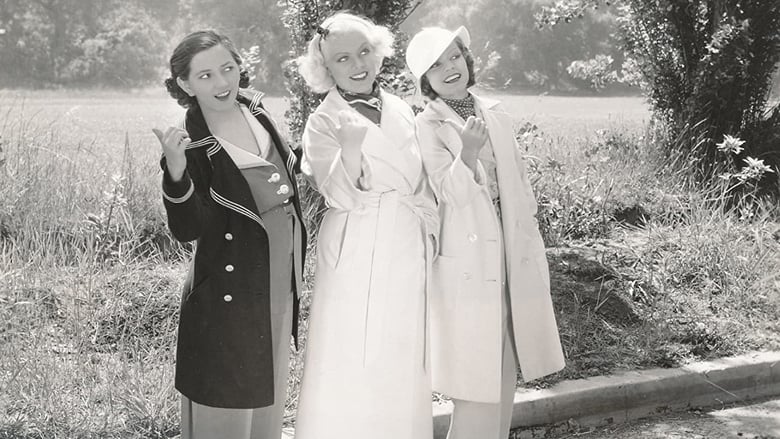
Every Night at Eight (1935)
Three young girls working in an agency have build a singing trio. They want to "lease" the Dictaphone of their boss to make a record of their singing, but they are caught and fired. When they are not able to pay their rent any longer, they decide to try it on an amateur contest at a radio station.
Watch Trailer
Cast


Similar titles
Reviews
Absolutely the worst movie.
It’s fine. It's literally the definition of a fine movie. You’ve seen it before, you know every beat and outcome before the characters even do. Only question is how much escapism you’re looking for.
A great movie, one of the best of this year. There was a bit of confusion at one point in the plot, but nothing serious.
This is a small, humorous movie in some ways, but it has a huge heart. What a nice experience.
Alice Faye, Frances Langford and Patsy Kelly lose their jobs and can't afford to pay the rent. They enter an amateur contest at a local radio station as a singing trio, but lose to a big band lead by George Raft when Langford passes out mid-song due to lack of food. Raft asks them to join his band, and they become famous, which throws obstacles in the way of a romance between Raft and Langford. An engaging enough little trifle which is largely an excuse to include a lot of musical numbers, the highlight of which is a lady doing a song as a chicken.
You've heard of the Andrews Sisters. Old movie fans certainly remember the Boswell Sisters, and maybe even the Duncan Sisters. Now meet the Swanee Sisters, three old friends who pretend to be siblings in order to get a radio contract with the help of egocentric band leader George Raft. It takes starving and suffering for them to rise to the top, but when they do, fame is the name of the game, and they are winners almost instantly. But with the workaholic Raft dominating all of their free time, they don't have an opportunity to enjoy their new found success, although it is obvious that it is love at first sight between Raft and one of the trio, the sweet, quiet Frances Langford who really is in the mood for love and more anxious to settle down in marital bliss than to find fame like her partners Alice Faye and Patsy Kelly.Some of my fondest memories of the wonderful musical revue "Sugar Babies" were the two songs that stand out in this Paramount movie musical. Ann Miller made her entrance gloriously while singing "I Feel a Song Coming On", and later had a moving solo of "I'm in the Mood For Love". These two songs with music by Jimmy McHugh and Dorothy Fields and George Oppenheimer have become standards, although it took a while for "I'm in the Mood For Love" to get the attention that it deserved. It is here sung by Frances Langford while dialog by co-stars George Raft, Alice Faye and Patsy Kelly rudely interrupted it for the audience to enjoy the song thoroughly. Faye got the chance to sing another song utilized in "Sugar Babies" with "I'm Shooting High" in the following year's "King of Burlesque".But "I Feel a Song Coming On" gets a glorious treatment, a big rousing musical production number where black singer James Miller takes over halfway through and literally makes it his own. His booming voice helps the audience get over the fact that he's surrounded by chorus girls in bandannas and an obvious Southern setting with a painting of a field seemingly of watermelon in the background and Mississippi Steamboats adding to the atmosphere. What makes this all the more stunning is the fact that he is singing this while white band leader George Raft plays, a rare occurrence on film in 1935, making me believe that this segment might have been trimmed out in Southern showings, or possibly the film not showing there at all in smaller communities.The film has a very amusing amateur radio show contest, with the Radio Rogues providing some spot-on imitations, one of them doing Dick Powell amazingly well. The fact that this imitator sang "Don't Say Goodnight" (from Warner Brothers' "Wonder Bar") and that this is a Paramount film is all the more interesting. The radio amateur show also features a very amusing performance of Florence Gill singing "Luigi Arditi" as a chicken clucking. Ms. Gill would do voice overs in many animated cartoons as a chicken, but to see her here is a real treat. For those who adored Charlotte Arren doing the same song a la Fanny Brice and Beatrice Lillie in "Broadway Melody of 1940", this is even more thrilling.As far as the three ladies are concerned, they all do very well, but it is interestingly the only major leading role in an "A" film where the focus is on Ms. Langford, with Alice Faye and Patsy Kelly providing adept support without the benefit of a romantic storyline. Most of her other appearances in films were supporting roles, guest appearances, or leads in "B" films. Alice gets to show what she would look like as a brunette, and in spite of her beauty as a blonde, it ain't pretty. There's a very funny bit with Kelly wearing a man's hat and an obnoxious piano mover making an obvious lesbian reference concerning her. As far as movie musicals go, this ain't earth shattering, but you'll have an awfully good time and might even find yourself singing along.
Almost fifty years before Dream Girls made its Broadway debut, Paramount put out this film about a band-leader and a trio of singers whom he takes under his wing and then gets a little too bossy about their private lives. One wonders if someone at Paramount noticed the resemblance.Every Night At Eight is the title of the film and also the title of a radio show that the trio and the band-leader wind up with. The trio consists of Alice Faye, Frances Langford, and Patsy Kelly who are three girls with humdrum jobs, Faye and Kelly at a switchboard and Langford as a secretary. One day they wait for the boss to leave and decide to make a record on his Dictaphone machine. Unfortunately they're caught and fired.Luckily they get a break on an amateur hour radio show with Walter Catlett in a spoof of the famous Major Edward Bowes Amateur Hour. On the bill that night is band-leader George Raft and his orchestra of unemployed musicians from the New Deal Civil Works Administration. By the way, Catlett's performance is devastating.Raft won the Amateur Hour contest by default because Langford faints from lack of food. Still he recognizes a good thing when he sees it and signs the girls and gives them a name, The Swanee Sisters. Unfortunately just like in Dream Girls he interferes a little too much in their personal lives. Still it all works out in the end, but I won't tell which of them he winds up with.This is Alice Faye's first of two films that she did on loan out from Fox when she was with that studio. Alice gets a good song to sing entitled Speaking Confidentially, but in this film, she's overshadowed vocally by Frances Langford. Jimmy McHugh and Dorothy Fields wrote most of the score for this film including the aforementioned song that Faye sang, but also from this score is I Feel A Song Coming On which the trio does and later Frances Langford sings the song most identified with her, I'm In The Mood For Love. As you can see McHugh and Fields really out did themselves in the writing of the score of this film. Langford also sings another gem, this one written by Ted Fio Riot, Sam Lewis and Joseph Young entitled Then You've Never Been Blue. Were it not for the other two songs, this one would have been the hit of the film.George Raft does nicely in a role that for once doesn't call for him to slug somebody. But the camera betrayed the poor man in this. Watch during the sequence of I Feel A Song Coming On as Raft is conducting the orchestra. He must have been wearing boots with Cuban heels that were two to two and half inches to give him extra height. I'm surprised neither he nor director Raoul Walsh noticed in the rushes and had it edited out.Also in that number is an obbligato version by a black singer named James Miller who is in his one and only film. It's a good rendition and I do wonder what ever happened to him.The best thing that Every Night At Eight has going for it is one of the best musical scores from the Thirties. And the wonderful stars who perform these numbers.
EVERY NIGHT AT EIGHT (Paramount, 1935), directed by Raoul Walsh, stars George Raft as a brash young band-leader named "Tops" Cardona in one of many musicals of the 1930s set in a radio station. Alice Faye, on loan from Fox Studios, billed second in the cast after Raft, appears platinum blonde with pencil eyelashes in the image of Jean Harlow, but with a personality all her own. Third billing goes to the wisecracking Patsy Kelly, while Frances Langford, in her movie debut, actually the central character, assumes fourth billing and the film's most notable songs. The story involves three singers who, after losing their jobs as switchboard operators, make the best of the situation by going on an amateur radio contest, hosted by the master of ceremonies (Walter Catlett). Before their turn to show their stuff, there's Henrietta (Florence Gill), a hen-faced woman whose specialty is singing like a chicken!; the Radio Rogues playing the Radio Romeos spoofing Dick Powell's "Don't Say Goodnight" from WONDER BAR (Warners,1934), and Tops Cordona and his band. Although the girls lose the prize money to Tops, they team up with him, and billed as "The Three Swanee Sisters," the girls soon become radio's singing sensation appearing on the air every night at eight. As time passes, Langford as Susan has fallen in love with the "all work and no play" Cardona (who is at times so full of himself), but fails to realize this until after the girls take a temporary walk out, but they come back in the end after he realizes he isn't any good without the girls vocalizing him, and save him from becoming "Flops" Cardona With the music and lyrics by Jimmy McHugh and Dorothy Fields, the songs are as follows: "Take It Easy" (sung by Alice Faye, Patsy Kelly and Frances Langford); "Don't Say Goodnight" (by Al Dubin and Harry Warren, sung by The Radio Rogues); "I Feel a Song Coming On" (instrumental band playing by George Raft); "Take It Easy" and "Speaking Confidentially" (Faye, Langford and Kelly); "Then You've Never Neen Blue" (a ballad written by Joe Young and Sam Lewis, sung by Frances Langford); "Take It Easy" (reprise); "I Feel a Song Coming On" (sung by Faye, Kelly, Langford/ solo by Faye/ James Miller/ chorus); "Every Night at Eight" (Faye, Kelly and Langford); "I'm in the Mood for Love," "I'm in the Mood for Love" (both sung by Langford); and "Every Night at Eight" (Faye, Kelly and Langford). During the production number of "I Feel a Song Coming On" there's a brief moment where Raft does some fancy dance steps while conducting the orchestra, something that couldn't be appreciated from the radio listening audience. EVERY NIGHT AT EIGHT, an agreeable 80 minute film, is very nostalgic look at old-time radio with fine cast, lively tunes and witty dialog. "I Feel a Song Coming On" and "I'm in the Mood for Love" are the biggest song plugs here, the latter being most associated with Langford. Rarely televised since the early 1980s, this is one of the many musicals from that era one can hope to be revived again. (**1/2)


